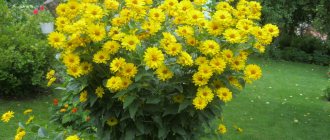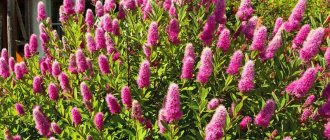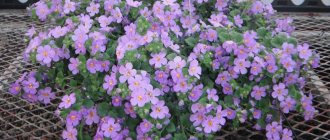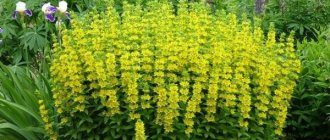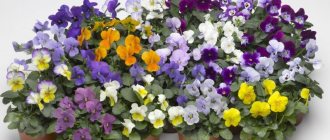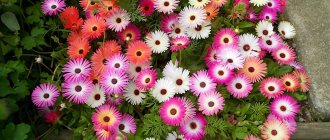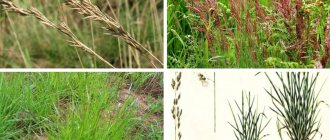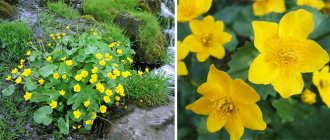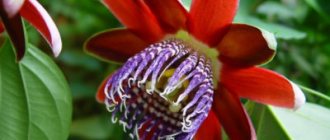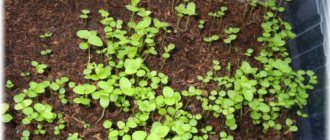Philodendron is an evergreen plant native to hot tropical countries. Despite the peculiarities of the climate of the flower’s homeland, many varieties are adapted for cultivation at home. The Philodendron genus is diverse; it includes vines, shrubs, and epiphytes growing on the trunks of other plants.
The flower is characterized by large, wide leaves with relatively thin, long trunks. The shape of the leaf depends on the variety of philodendron and the age of the plant (with aging it may change slightly).
Over time, small leaf scales may appear on the stems, protecting them from damage.
Is it possible to keep a philodendron at home?
Superstitious and overly cautious gardeners do not recommend keeping philodendron at home.
The first category of such advisers is guided by signs. It is believed that philodendron is a “husband buster” plant that provokes quarrels and the subsequent departure of the spouse from the family. Especially in this regard, they slander the climbing philodendron, one of the most popular domestic species.
The second category of flower growers bases their beliefs on one simple fact: philodendron juice is poisonous . Therefore, if you are going to have such a tropical beauty at home, you should work with them with gloves so that the juice does not irritate the skin.
You should not believe in omens, but you must adhere to the main rule of all young parents and pet owners: keep the poisonous vine where children and four-legged pets cannot reach it. If there is no such inaccessible place where you could “hide” the philodendron, you should wait or refuse to purchase it.
But there are benefits from the poisonous vine: philodendron is on the list of plants that do the best job of purifying the air. In particular, they rid the atmosphere of formaldehyde and xylene.
Philodendron bipinnate or Sello (P. bipinnatifidum)
This variety has many names and serves as an excellent illustration of the decades-long confusion in the classification of philodendrons. Most often, flower growers know the plant under the names double-pinnate, Sello or bipinnate.
If the name Philodendron Sello is given in honor of the famous flora researcher and naturalist, then other names are a tribute to the unusual shape of intricately cut multi-lobed leaves, reaching a length of 40–70 cm.
It is interesting that very young Sello philodendrons, like other varieties, have solid, pointed heart-shaped leaves. In addition, Philodendron bipinnate is a rare variety that has long been used on the farm.
Indigenous people use aerial roots to make homemade ropes. The leaves and petioles produce what the residents believe is healing juice.
Botanists who studied the Sello philodendron noticed that during flowering the temperature around the anthers inexplicably increased by almost 13 ° C. As a result of this phenomenon, the sweetish-honey smell sharply intensifies, which literally attracts pollinating insects to the plant. The juicy berries of Philodendron bipinnate, ripening in place of faded cobs, are edible.
Main types and names of philodendron varieties with photos
Philodendron climbing (also known as clinging) is one of the most common plant species. From the photo it is not difficult to guess that it is often grown in hanging flowerpots. It is a vine with thin stems and not very large green leaves: 15 cm in length and up to 10 cm in width. They are usually heart-shaped and have a leathery surface. There are varieties of this philodendron with glossy leaves, which at first may have a reddish tint.
Blushing (or reddish) is a climbing philodendron with short internodes and a thick stem. As can be seen in the photo, it does not branch and is entirely covered with large leaves up to 25 cm long. They have an arrow-shaped or ovoid triangular shape. Young ones are green with pink edges, after which they acquire a dark red color. Cataphylls, in turn, have a pure red color.
The trunk of the blushing philodendron turns from red-green to gray over time. The shoots are characterized by increased fragility. The flower has a strong aroma. He himself is white, and the cover is dark red.
Philodendron sello (also known as bipinnate or double-pinnate) is a vine with a gradually woody stem. It is smooth to the touch and can reach 3 meters in length. After the falling leaves, light oval marks remain, which form a bizarre pattern on its surface.
Leaves on long petioles have a triangular or smoother heart-shaped shape with a deep double pinnate dissection (see photo). Their length is about 90 cm, color is most often pure green or with a gray tint. A typical representative of Philodendron cello is the "Mexican Snake", one of the popular house philodendrons.
Ivy is a climbing philodendron that can grow up to 6 meters in length. Its wide leaves resemble a heart in shape and can reach up to 30 cm in length. They are leathery and glossy to the touch, and most often have a dark green tint in color. The flowers have green spathes and red ears of any shade - from light to dark. The fruits are white-green berries.
Philodendron xanadu is tree-like. Its rounded leaves have a dissected shape and can reach 40 cm in length. The flower has a bright purple-red color, but blooms very rarely at home.
Radiant philodendron is a creeping vine. The leaves are located on long and rounded petioles, as shown in the photo. At home, the leaf blade usually does not grow longer than 20 cm. Its shape changes greatly with age: from whole leaves they turn into dissected ones and are pinnate. They are usually green in color and glossy to the touch.
Philodendron atom is shaped like a shrub. It has a fairly compact size, but at the same time delights with its decorative effect. Its five-lobed leaves are wavy-curved. They have a glossy sheen and a bright green color. An excellent option for small apartments, as this species grows very slowly.
Scandens is a climbing and low-branching species. This vine is one of the most shade-tolerant among philodendrons. Its leaves are green, heart-shaped, and have a glossy sheen.
Philodendron lobed is a climbing vine with dark green foliage. The leathery, glossy leaves are ovoid in shape, which can turn into three-dissected leaves. Then it can be divided into five lobes, all of this can be seen in the photo of the plant. The petioles are approximately equal to the length of the leaf - from 10 to 40 cm. The flexible branches have an average thickness.
There are two types of imperials - red and green. Philodendron imperial is distinguished by a stem with short internodes and large oval leaves. In the “red” variety they are dark red, in the “green” variety they are dark green. Its flowers are usually collected in a rosette, the diameter of which can reach a meter.
Lance philodendron is a fast-growing vine with spear-shaped leaves. They are glossy, grow up to 40 cm in length, and are green in color. With age, they may acquire cutouts at the base and some waviness.
Philodendron cobra is a drop-bearing species. It has oblong leaves with pointed ends. If the vine spreads, the leaves are unlikely to grow more than 14 cm, but with vertical growth they can reach 25 cm in length. They are green in color; Cobra may have light decorative spots on the plate.
Guitar (or bipinnate) philodendron can grow up to 2 meters in length, so it needs support. In its youth, the foliage is heart-shaped, then acquires a deeply lobed shape with a “waist”, which is why the leaf becomes like a guitar.
Jellyfish are a very colorful species. Its leaves are yellow, and its petioles and stems are red.
Mediopicta is a light green vine with neat heart-shaped leaves.
Burle marx is a well-branched bush. Very shiny glossy green leaves are located on long petioles.
Warty philodendron is a fragile vine. Leaves - “hearts” can grow up to 60 cm in length. They are painted very variegated. The main part of the leaf is some shade of green (such as olive or emerald green). In the upper part, the leaves may differ from the main color by a brown tint, run along the veins with a fawn tint, and in the lower part have a brown color with a red tint. The long petiole is also colored red and covered with warty hairs.
The graceful (or elegant) philodendron is a large vine whose stem gradually becomes woody but does not branch. The large and wide leaves are dark green in color, oval in shape and have a deep pinnate dissection.
The most popular types of indoor plants, benefits and harms
Description of the plant
This flower belongs to the Araceae family - an evergreen perennial plant. The Philodendron genus is large (about 900 plant species, many of which have not yet been fully studied by botanists) and incredibly diverse. It contains small bushes and real giants, differing in shape, feeding methods, and preferences for living conditions. Most often in the natural environment, Philodendrons climb up nearby trees, but there are also epiphytic and semi-epiphytic species that obtain moisture and nutrition from the environment (air, dew, sun). If Philodendron seeds sprouted away from trees and other supports, then the shoots will spread along the ground, guided by the shadow, towards the nearest support: a tree, wall or fence. Under natural conditions, the length of the Philodendron vine can reach 200 m.
Philodendrons have both underground and aerial roots. They use numerous aerial roots, small and hairy, for attachment to supports. With long and thick roots, plants absorb moisture and obtain food for themselves. Sometimes such roots make their way under the soil and act as a root system there. Very convenient, especially if the root system is damaged or dead.
Appearance
Philodendron stems are fleshy and woody at the base. There are species that have a fairly powerful stem, which allows plants to rise to great heights without support.
The leaves of the flower are large, shiny, and very often carved. One plant may have leaves of different shapes and sizes. Scale-like leaves (cataphylls) protect vegetative buds. The main leaves are alternate, petiolate. The length of one such leaf, in some species, reaches two meters, and the width is 90 cm. But other types of Philodendron have leaves that are more modest in size - only 11 cm. Leaf plates are ovoid, heart-shaped, oval, pinnately dissected or arrow-shaped.
This may be interesting: Description of varieties of Ficus Benjamin
Young leaves initially look like hearts, and as they grow, they change their shape and size. In addition, as a rule, the color of the upper leaves of a flower is a darker shade than the lower ones. The color of the leaves is mainly dark green, with the upper side being more intensely colored than the underside. There are species with purple leaves, but they are rare.
Bloom
In nature, Philodendrons are flowering plants. They produce flowers in the form of spadixes with waxy, bicolored hood-like spathes. The bedspreads are painted in shades of pink, pale green, red and purple. The flowers are bisexual. The fruits are small berries that ripen at different times, depending on the species. Unfortunately, at home, even with extremely comfortable maintenance, Philodendrons bloom extremely rarely.
Philodendron sap is toxic and you should wear gloves when handling it. At the same time, Philodendron is a useful plant that has a beneficial effect on the microclimate of the room in which it grows. It releases phytoncides that kill microbes dangerous to humans. NASA included this flower in the list of plants that purify the air.
What you need to know if you want to buy a philodendron
Even if you buy philodendron in a specialty store, you cannot be sure which variety you are getting. This is caused by the above-described property of vines to change the color and shape of their leaves over time and thereby mislead even experienced gardeners. Although you can still try to identify the variety, because some of them have very characteristic differences.
Next, you should focus your attention on the health of the selected philodendron and carefully examine it. Its leaves should not be limp or damaged, and they should not have spots or dry edges. The stem should also be clean, with no signs of rotting or drying out. Check the plant carefully for pests.
The indoor philodendron flower is not the cheapest pet. The price of the most inexpensive plants starts at 2,000 rubles - most often this is a plant 35-40 cm high. Much depends on the species. A meter-high philodendron can cost 7,000, 14,000, or even 32,000 rubles. As a rule, tree-like forms are more expensive for buyers than vines.
You can find out what the male anthurium flower contains and see its photo at this address:
How anthurium is transplanted at home is described in this article.
And this information will be useful to those who do not know how to make anthurium bloom.
Philodendron reddish or blushing (P. erubescens)
Another liana in the constellation of philodendron species for home cultivation is the blushing philodendron, which has given gardeners a lot of varieties with original, including variegated heart-shaped or pointed-ovate leaves.
The name of the plant was given by the reddish petioles, internodes, and in some cases, leaf blades of this climbing, almost non-branching vine.
Having noticed a shade unusual for other philodendrons, breeders have now obtained a lot of interesting varieties with pinkish, picture-green, deep purple and marbled leaves.
In addition to increased decorativeness, cultivated varieties of Philodendron blushing have more compact sizes and better adaptability to indoor conditions.
Rules for caring for philodendron at home
Philodendron has established itself as a very shade-tolerant plant. However, in bright diffused light it grows much faster and only becomes more beautiful, while in a too dark place it can stretch out and produce very small leaves, which, if variegated, lose their beautiful color and become uniformly green. Direct rays are contraindicated for it, and a large vine is unlikely to fit on the windowsill. So the best place for it is near the east window or in the depths of the south room.
In general, abundant watering is important for the philodendron native to the tropics, especially in summer . However, there is a danger of overdoing it, causing stagnation of water in the roots and their subsequent rotting. Therefore, good drainage is especially important, not only in the form of a layer at the bottom of the pot, but throughout the entire soil mass. In winter, you can water the plant no more than once a week, but you should not allow the soil to dry out. If the leaves begin to turn yellow, it most likely means that you have overdone the moisture.
That is why it is better not to plant philodendron in heavy, fertile soils - abundant watering of such soil can lead to waterlogging. It is better to prefer a light substrate: 3 shares of garden soil, 2 shares of peat, 4 shares of bark for growing orchids and 1 share of perlite. There is a simpler option: turf and leaf soil with sand in a ratio of 1:3:1. Ready-made soil for Saintpaulias is also suitable. It would be useful to add sphagnum and charcoal to the soil.
Philodendron can be fed with organic fertilizer quite often. The regime depends on the concentration: fertilizer diluted twice or three times can be fed to the plant once a week, and an undiluted portion can be given once every 2 weeks. In winter, 1 feeding per month will be enough. You shouldn’t be overzealous with feeding young plants - they are reluctant to produce new leaves due to a large amount of fertilizer. You also need to be very careful with the amount of nitrogen - there should not be a lot of it in fertilizers.
Coming from the hot tropics, philodendron loves warmth . The optimal temperature for it is 22-30 degrees. In any season it should not fall lower than +13. In addition, the soil should also not freeze - its temperature should be similar to room temperature. Therefore, you should not place a pot of philodendron on a cold windowsill or floor in winter - you need to come up with some kind of stand.
Transplantation is carried out as needed. If you see that the overgrown roots have already entangled the entire earthen ball, sticking out of the drainage holes, and the size of the vine implies a larger container, then the time has come. Also a sign that it is time to replant the philodendron is a salt coating on the surface of the soil, its strong compaction or the appearance of moss.
Transplantation takes place in April. As a rule, young and fast-growing philodendrons are replanted once a year. Adults need a transplant no more than once every 2-3 years. If the specimen is too large, you can simply replace the top layer of soil.
Water treatments
Large philodendron leaves require regular wiping with a damp cloth, as dust accumulates on them very quickly. However, this procedure must be carried out with great care: the seemingly strong leaves of the vine are actually very fragile and are easily torn by careless movement. Don't forget to wipe the shoots too.
The velvety leaves do not need to be wiped, but they can be sprayed. True, only the smallest sprayers are suitable for this. In general, spraying is relevant for all varieties: tropical philodendron loves high humidity. It is provided by spraying the air around the plant or placing a container with it on wet pebbles or expanded clay.
The vines are also given a bath, usually once a week. The pot with the plant is lowered into a bucket, allowing the soil to become well saturated with moisture. The supports are also moistened if they are wrapped in moss or made of coconut fiber.
In general, the unpretentious philodendron has long been accustomed to the dry air of apartments (with the exception of some particularly capricious species that grow well only in greenhouses). However, additional moisture will undoubtedly benefit the vines.
High humidity requires good ventilation.
Philodendron diseases and difficulties encountered during cultivation
| Problem | Cause |
| Tips and edges of leaves dry out | Insufficient watering |
| Tips and edges of leaves dry out | The air is too dry |
| The leaves wrinkled and turned brown | |
| Tips and edges of leaves dry out | Too little watering |
| Leaves lose their variegated color and characteristic dissection | |
| The brown edge on the edges of the leaves expands | Overwatering |
| Leaves grow small | |
| Small and pale new leaves | Little light |
| Elongated shoots | |
| Leaves lose their variegated color and characteristic dissection | |
| Light or brown dry spots on the surface of the leaves | The sun is too bright |
| Pale leaves | |
| Leaves curl down | Excess fertilizer |
| New terminal leaves grow small and yellow | Lack of fertilizers |
| The leaves lose their variegated color and characteristic dissection. | |
| Leaves lose their variegated color and characteristic dissection | Hypothermia |
| The leaves turn black |
Pests that philodendron is susceptible to include traditional scale insects, mealybugs and spider mites. The methods of dealing with them are simple - store-bought or even folk remedies.
A serious cause for concern is the rotting of philodendron stems. This most often occurs due to the fact that the vine growing in heavy soil is over-watered at low temperatures.
But yellowing and falling of the lower leaves is a natural process of plant aging.
Another natural phenomenon is the appearance of water droplets on philodendron leaves. This happens before rain and is caused by high air humidity, when the plant can no longer evaporate moisture into the air due to its excess. In this case, you need to wait a little longer with moisturizing, perhaps even reduce watering.
Arrowhead Philodendron (P. sagittifolium)
This type of philodendron first came to the attention of scientists in 1849, and since then, thanks to its elongated, solid leaves and unpretentiousness, the native inhabitant of many parts of Central America has become a welcome guest in greenhouses and botanical gardens.
For home growing, the arrow-leaved philodendron is too large, because its leaves can reach a length of 70 cm, and its petioles can reach 1 meter.
How to propagate Philodendron yourself
Most often, gardeners propagate philodendron by cuttings - this is the easiest and most reliable way. Both apical and stem shoots are suitable - the main thing is that they have at least two leaves. The most suitable case: an area with aerial roots. The cuttings are planted in sphagnum or sand-peat mixture, covered with a transparent film and maintained at a temperature of 25 degrees above zero.
Cuttings of some varieties of philodendron take root well in water, but soil rooting is still preferable, because in this case the roots will not have to adapt when transplanted into the ground.
If rot appears on the cut, cut off the damaged area and treat the cut with crushed coal. After this, you can try to root the sprout in the soil again.
You can also root a stem cutting that has no leaves. It needs to be laid on moistened moss and the container placed in a warm place. Perhaps the cuttings will not develop roots, but a bud will awaken from which a shoot will sprout. When it reaches 5-6 cm, it is cut and rooted. And on the “stump”, after some time, a new bud can sprout.
In order to propagate philodendron by leaf, the leaf is cut off at the heel and placed in water. You can plant it in light soil, but in this case the container must be placed in a bag and ventilated regularly. You can tell that the plant has successfully taken root when a new leaf appears.
When propagating by air layering, the shoots of vines are simply fixed to the ground until roots appear at their nodes. As soon as this happens, the rooted shoot is cut off from the parent plant.
In the case of tree-like philodendrons, a ring cut is made in the spring on their woody trunks. A second one is made 3 cm lower or higher, and the bark between them is removed. The exposed cut is treated with a root former, wrapped in moistened moss and wrapped in polyethylene.
The moss needs to be constantly moistened, and then after a few months roots will appear there. A couple of months after their appearance, the film and moss are removed, the trunk underneath is cut off and planted in a container. Do not rush to throw away the remaining stump: most likely, new shoots will appear on it over time.
Methods for propagating indoor flowers
There are several ways to propagate a flower. At home, philodendron can be propagated by cuttings, leaves, seeds and air layering.
Cuttings and leaves
The material for cuttings is apical or lateral shoots with 2-3 full leaves. Parts of the stem with aerial roots take root much faster.
The cuttings are placed in a damp mixture of sand and peat. They are kept in conditions of high humidity and high temperature until complete rooting. The cuttings are then replanted as adult philodendrons.
Cuttings
The leaf is not the most popular method of propagation because it often rots before it has time to take root. But if there is no other propagation material, you can try to breed the philodendron from the leaf.
Planting material is a large leaf with a heel, which is cut from an adult, healthy plant. The rooting process is similar to rooting cuttings.
You may be interested in:
Description and names of bulbous indoor plants (23 photos) Beginning gardeners are often advised to start growing with bulbous flowers, because they are not so picky...Read more...
Air layering
Propagation by air layering is suitable for philodendrons with vertical stems. This method is very simple and is considered the most effective.
A flower pot filled with soil suitable for the plant is placed near the philodendron. Then select a stem, preferably with aerial roots, and root it in an additional pot. The base of the stem should remain on the mother bush, the middle is buried in the substrate, and the tip is left on the surface of the soil. For reliability, the stem can be pinned to the soil with a staple.
Reproduction by air layering
No additional care is required for the cuttings, since they feed from the main bush. When the stem is well rooted, it is cut off from the mother plant.
Seeds
Tree species of plants are propagated by seed. Fresh seeds germinate within a week after sowing. They are germinated in peat-sandy soil, after being soaked in water for 12 hours.
For successful germination, seeds are germinated in greenhouse conditions: at high temperatures and under glass. The planting material is not buried, but simply poured onto the soil. Every day, the seeds are sprayed with a fine spray bottle and condensation is removed from the glass.
After pipping, the glass is removed, but the flowers continue to grow under the same conditions. When the sprouts produce a pair of true leaves, they are picked into separate containers. Stronger philodendrons are replanted in the spring.
